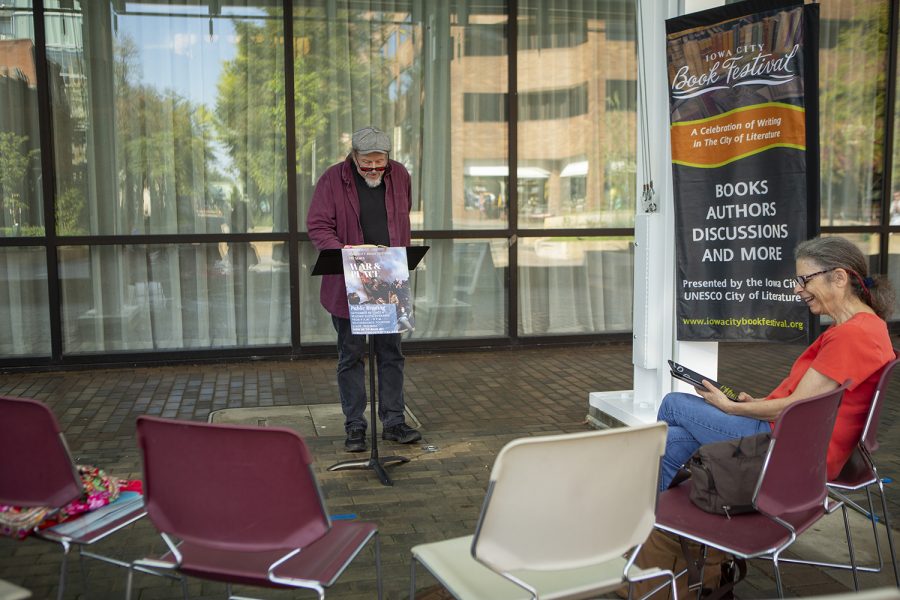150 years of War and Peace; Iowa City celebrates the legacy of Tolstoy’s epic
Leo Tolstoy’s War and Peace is turning 150 this October, with Iowa City community members celebrating the novel with live readings and exhibits.
A volunteer reader speaks during a public reading of War and Peace on the Ped Mall on Monday Sept. 30, 2019. As part of the Iowa City Book Festival, readings will continue on the Ped Mall for three days.
October 2, 2019
“If everyone fought for their own convictions, there would be no war.” These words resonate as Leo Tolstoy’s epic War and Peace turns 150 this year, and members of the Iowa City community intend to celebrate.
Part of the Iowa City Book Festival, War and Peace-theme events will take place all this month. The final reading of Richard Pevear and Larissa Volokhonsky’s translation of Tolstoy’s epic will take place today on the Pedestrian Mall stage in front of the Graduate hotel, 210 S. Dubuque St.
“My motto for these readings is that we take a novel that is too long, too old, and too boring and make it readable, relevant, and exciting,” said visiting Assistant Professor Anna Barker, who is responsible for setting up some of the Tolstoy-theme events.
Barker said no novel is more contemporary or significant as Tolstoy’s. Its history is seen through the eyes of the upper class and lower class, with 600 characters contributing to the plot.
“Tolstoy’s characters have been with me since I was 16 when I first had to read War and Peace for my Russian literature class, and I was absolutely in love with certain characters,” Barker said. “Now that I’m older, I am learning to appreciate very different characters.”
It’s not just prose that will be read aloud. The University of Iowa Stanley Museum of Art will present exhibits examining the connection between Francisco Goya’s Disasters of War and Tolstoy’s War and Peace in the UI Main Library’s Special Collections Reading Room until Dec. 19, and in the Stanley Visual Classroom in the Iowa Memorial Union until Dec. 8.
“What’s thrilling about the show at the Stanley Museum of Art and at Special Collections is that it highlights a partnership between the library and the museum, as well as the ways the expertise of the professors across disciplines enhance our understanding of works in our collection,” said Joyce Tsai, chief curator for the Museum of Art, in an email to The Daily Iowan.
The UI has two first-edition volumes of Goya’s prints. After one started falling apart, Giselle Simon and Elizabeth Stone came in to preserve the prints.
On Oct. 15, the Stark Opera Studio in the Voxman Music Building will screen the filmed stage production of War and Peace with an introduction by Nathan Platte, who organized the event.
“Prokofiev created multiple versions of the opera in an attempt to appease Soviet censors — certain versions were to be performed over two nights,” Platte said in an email to The Daily Iowan.
FilmScene will be screen Bondarchuk’s four-part film on Oct. 6 and Oct. 7 with an introduction from Barker.
Made in the 1960s with an unlimited budget, Bordachuk’s adaptation was like a David Lean film.
“The Russians really felt this is their national epic, and they’re not going to spare any expense in making this film,” Barker said. “If he needed thousands of soldiers in Napoleonic uniform, he got it. If he needed 1870 French china, he got it. Literally a no-budget film. Can never be made again.”
Barker noted that the novel continues to relate with newer generations.
“It’s just a brutally fun book,” Barker said. “And it’s fascinating to me that students who are between 18 and 21, undergraduates, keep on coming back to this novel.”














